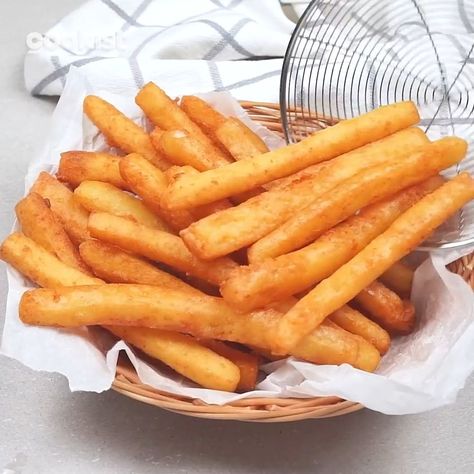There’s something truly enchanting about the satisfying crunch of a well-made fried potato chip. It’s more than just a snack—it’s an experience that evokes memories of carefree moments, late-night gatherings, and simple pleasures. Whether you’re indulging in a store-bought bag or experimenting with homemade creations, these golden crisps have a way of making your day brighter. But have you ever wondered what makes them so irresistible? Let’s embark on a journey to uncover everything you need to know about fried potato chips, from their fascinating history to mastering the art of frying them at home.
Did you know that this beloved snack wasn’t originally intended to exist? Its creation was purely accidental, yet it has since become a global phenomenon. As we delve deeper into its origins, you’ll discover how far this humble treat has come and why it continues to hold such a special place in our hearts.

A Journey Through Time: The Fascinating History of Fried Potato Chips
( Discovering the Origins of This Beloved Snack)
The story of fried potato chips begins in 1853 at Moon’s Lake House, a restaurant in Saratoga Springs, New York. Chef George Crum, frustrated by a customer who repeatedly sent back his french fries for being too thick, decided to slice the potatoes paper-thin and fry them until they were crispy. To his surprise, the dish became an instant hit, eventually earning the name “Saratoga Chips.”
From there, the popularity of these golden crisps spread like wildfire. By the early 20th century, companies like Lay’s began mass-producing them, transforming them into a household staple. Today, the industry is worth billions, with countless flavors and variations catering to every palate imaginable.
Here are some interesting tidbits about the evolution of fried potato chips:
- They were first sold commercially in bags made of waxed paper.
- The term “crisp” originated in England, where they remain a favorite snack.
- Global consumption continues to grow, with Asia-Pacific leading the market due to increasing urbanization and changing lifestyles.
Understanding the roots of this snack not only adds depth to your appreciation but also inspires curiosity about how you can create your own version at home.
The Science Behind Perfectly Crispy Chips
(Unveiling the Secrets Behind Crispy Perfection)
Now that you know the history, let’s talk science. Achieving the perfect texture and flavor involves understanding key factors like slicing technique, oil choice, and temperature control. Here’s a breakdown of what makes a great chip:
Texture Matters
Thin slices are essential for achieving maximum crispiness. Thicker cuts tend to retain moisture, resulting in softer chips. For optimal results, aim for slices between 1–2 millimeters thick.
Oil Selection
Choosing the right oil can make all the difference. High smoke-point oils, such as peanut, sunflower, or avocado oil, are ideal because they maintain stability at high temperatures without breaking down. Avoid using olive oil, which has a lower smoke point and may impart an unwanted taste.
Temperature Control
Frying at the correct temperature ensures even cooking and prevents sogginess. Aim for a range of 350°F to 375°F (175°C to 190°C). Lower temperatures cause the chips to absorb excess oil, while higher ones burn the exterior before the interior cooks fully.
To help you remember these tips, here’s a quick checklist:
- Use sharp tools or mandoline slicers for uniform cuts.
- Opt for oils with high smoke points.
- Monitor your frying temperature closely.
By following these guidelines, you’ll be well on your way to creating chips that rival those found in stores.
Step-by-Step Guide to Making Your Own Fried Potato Chips
( Master the Art of Frying Your Own Chips)
Ready to try your hand at making homemade chips? Follow this step-by-step guide to ensure success:

